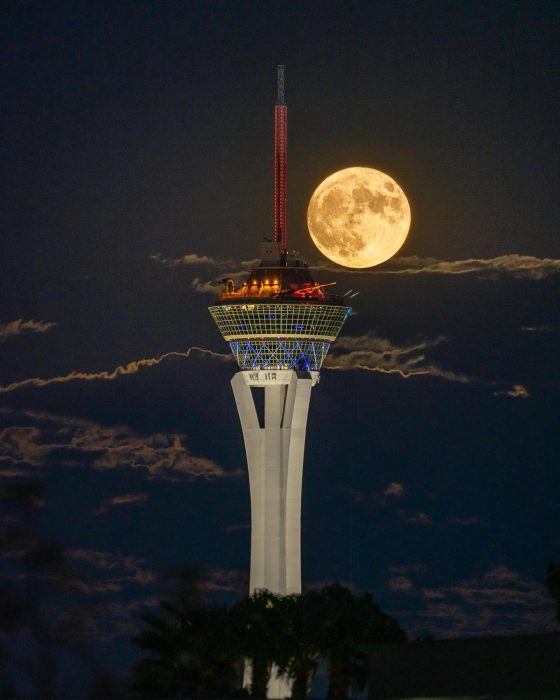
Last night, Las Vegas, known for its dazzling lights, was outshone by a natural wonder – the Supermoon. Here’s a detailed look at what made this celestial event so special:
- The Supermoon Phenomenon: A supermoon occurs when the moon is at its closest approach to Earth in its orbit, known as perigee, while also being in its full moon phase. This proximity makes the moon appear larger and brighter than usual, though the difference might not be immediately noticeable to the untrained eye.
- Last Night’s Event: The moon reached its full phase at 2:26 p.m. EDT, but for viewers in Las Vegas, the moonrise was the highlight. The moon, appearing as a blue supermoon due to it being the third of four full moons in this season, was not only a supermoon but also dubbed a “Blue Moon” – a term for the third full moon in an astronomical season with four full moons, not for its color but for its rarity.
- Visibility and Timing: In Las Vegas, the moon rose in the east at approximately 8:18 p.m. local time, with an illumination of 96.2%. This event was particularly significant because the next blue supermoon won’t occur until 2032, making last night’s moon a rare sight.
- Community Engagement: Social media platforms like X were abuzz with posts from Las Vegas residents and visitors capturing the moon’s majestic rise over the city’s skyline. Photos and videos showcased the moon’s glow against the backdrop of the Las Vegas Strip, creating a unique juxtaposition of nature’s beauty with human-made wonders.
- Cultural and Historical Context: This supermoon was also known as the Sturgeon Moon, a name derived from Native American traditions when sturgeon fish were most readily caught in the Great Lakes and Lake Champlain. However, in Las Vegas, where the desert landscape offers a different kind of natural beauty, the moon’s presence added a mystical element to the city’s nightlife.
- Scientific Interest: While the visual spectacle was evident, the scientific community also took interest. The supermoon’s brightness, due to its proximity, offered excellent conditions for lunar observation, with some enthusiasts and scientists likely using this opportunity to study the moon’s surface features in greater detail.
- Future Events: For those who missed this event, the next supermoons are slated for September 17, October 17, and November 15, 2024, each with its unique characteristics, but none will combine the rarity of being a blue supermoon until 20








